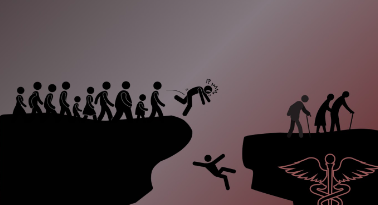The Arrival of AI in Academia
Artificial Intelligence, or AI, was initially developed to help humans complete tasks and solve problems such as correcting errors like the auto-correct feature on your iPhone, and working as home assistants like Alexa or Siri.
Although AI has been around for some time already, only recently has it become a topic of debate and controversy among the general public due to the creation of ChatGPT in late November of 2022. The creation of an AI that could complete assignments and write essays within seconds did not go unnoticed by students and has resulted in a significant increase in cheating and plagiarism among students.
According to a survey conducted by the Pew Research Center, about a third of U.S. teens aged 13-17 who have heard about ChatGPT have been using AI to complete their assignments or write essays on any given topic. This trend has raised concerns about academic integrity, as students are using AI to save time and effort on their schoolwork.
Teachers across the county and those of Blake have reported a growing increase in the frequency of receiving assignments and essays written by AI.
“[The essay just] doesn’t sound right,” Blake English teacher Ms. Lucey notes. “You can just [tell] that it was written by AI… The essay will sound great, but it [doesn’t] answer the question asked.”
Despite catching the use of AI in classwork submitted to her, Ms. Lucey has faced challenges in penalizing students for their academic dishonesty
“I’d like to give you a zero… [but] I’m not allowed to do that … I’m supposed to give you the 50% because it’s an all-tasks assignment,” she laments.
In response to this issue, Ms. Lucey has implemented measures such as requiring essays to be handwritten in class, and although this has reduced the use of AI in essays, it has also resulted in fewer essays being submitted. Notably, she found that the use of AI was found to be more prevalent among 10th-grade students compared to 9th-grade students, a consistency found with the survey conducted by the Pew Research Center which finds that the percentage of teens using AI in schoolwork is 12% for seventh and eighth graders, 17% for ninth and tenth graders, and 25% for eleventh and twelfth graders.
There are ways for educators to counter these challenges, though. Interestingly enough, due to the widespread use of generative AI like ChatGPT, apps and websites with specialized AIs such as GPTZero have been developed specifically to detect and counter them.
Although these apps and websites can detect the use of unoriginal and plagiaristic AI, these websites make it hard for people to use helpful programs such as Grammarly which assists with writing by reviewing spelling, grammar, punctuation, clarity, engagement, and delivery mistakes in English texts, and suggests replacements for the identified errors.
They can also lead to unintended consequences that harm the credibility of real and hardworking victims when they mistakenly detect human writing as AI generative work. According to FASTCOMPANY, a college student was falsely accused of using AI in one of their papers, potentially facing expulsion from their college.
Moving forward, it is important to find a balance between regulating the usage and detection of AI and putting in place effective measures to maintain academic honesty as AI continues to grow.




